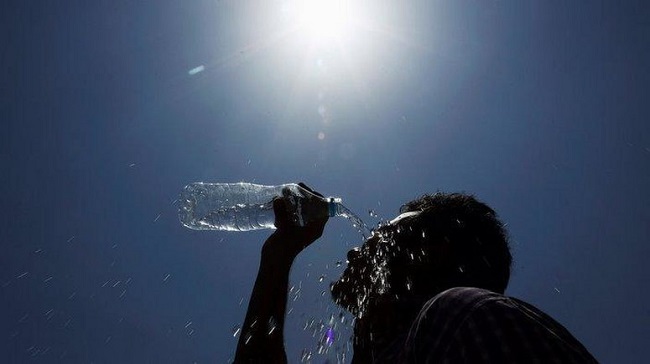
Human-caused climate change has made the humid heatwave in southern West Africa including Nigeria during February, 10 times more likely, according to a rapid analysis by an international team of leading climate scientists from the World Weather Attribution group.
The study also found that if humans do not rapidly move away from fossil fuels, causing global warming to rise to 2°C above preindustrial levels, West Africa will experience similar heatwaves about once every two years.
In February, Nigeria and the rest of West Africa was hit by an unusually intense humid heatwave with temperatures not normally seen until March or April. The most severe heat occurred from February 11 to 15 with temperatures above 40°C.
According to Wasiu Adeniyi Ibrahim, Head, Central Forecast Office, NiMet, Abuja, Nigeria, the February heatwave happened early in the year, meaning many people would not have been acclimatised to the heat.
“It is clear climate change is bringing more and more dangerously hot adays to West Africa. With every fraction of a degree of global warming, heatwaves like the one we experienced in February in West Africa will become even hotter,” he said.
In Nigeria, doctors reported an increase in patients presenting for heat-related illness. People complained of poor sleep due to hot nights even as NiMET issued several warnings about the heat.
Climate change, caused by burning fossil fuels like oil, gas and coal, and deforestation, has made heatwaves more frequent, longer and hotter around the world. To quantify the effect of climate change on the hot and humid temperatures in West Africa, scientists analysed observed weather data and climate models to compare how the event has changed between today’s climate, with approximately 1.2°C of global warming, and the cooler pre-industrial climate, using peer-reviewed methods.
The analysis looked at the maximum five-day heat index in a region of southern West Africa where the heat was most extreme, including Nigeria, Benin, Togo, Ghana, Côte d’Ivoire, Liberia, Sierra Leone, and small parts of Guinea and Cameroon. The heat index, also known as apparent temperature, is a measure that combines temperature and humidity to reflect how heat feels to the human body because higher levels of humidity make it harder for humans to cool down.
While the average air temperature in West Africa was above 36°C, the heat index for the same period was about 50°C, reflecting how a combination of humidity and high temperatures caused dangerous conditions.
The researchers found that climate change made the heatwave as measured by the heat index about 4°C hotter and ten times more likely. Before humans started burning fossil fuels, similar heatwaves used to be rare events, occurring less than once every 100 years. However, in today’s climate, with 1.2°C of warming, similar humid heatwaves occur about once every 10 years.
According to the report, “If the world does not move away from fossil fuels and rapidly reduce emissions to net zero, West Africa will experience even hotter and more frequent humid heatwaves. If global warming reaches 2°C, as is expected to occur in the 2040s or 2050s unless emissions are rapidly halted, similar events will occur about once every two years and will become a further 1.2-3.4°C hotter.”
Also Read: Insecurity: Disinformation, greatest problem of Nigeria — NCoS
Source: